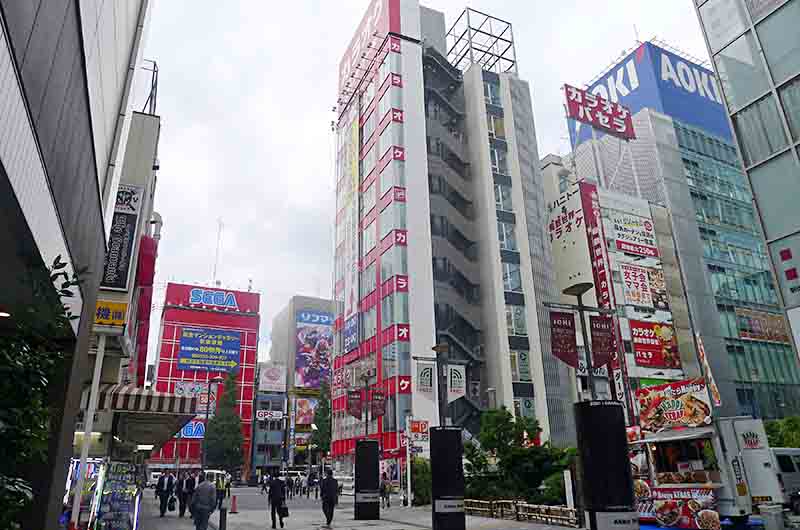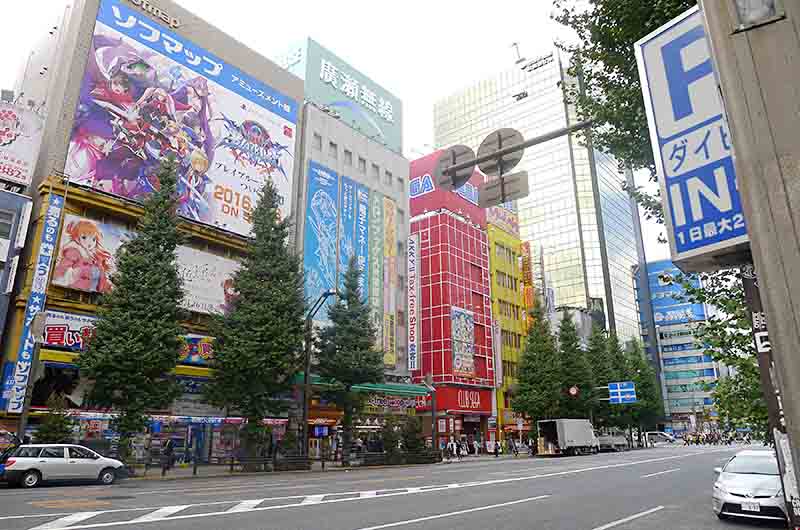 |
| Akihabara. The Electric Town on the west side of the Akihabara Station. |
“Where can I buy a camera?,” I asked my friend. I proceeded to describe the brand and model I wanted.
“Go to Akihabara. Chances are you’ll find the particular camera you want,” was the reply.
It would be my first time to visit the “Electric Town”. The sobriquet and the fact that it’s in Japan, where anything electronic gets upgraded no sooner when it hits the retail shelves, seem to guarantee that I’ll spot what I fancy, plus more.
A couple of hours at the place should be enough, I said to myself. But like always, I was a poor “budget minister” as I always undervalue an area’s potential thrill level. There should always be room to extend the visit on my itinerary.
The area around Akihabara Station in the Sotokanda district, Chiyoda Ward, is commonly referred to as Akihabara.
Here’s how it got its name: Akihabara was a fire-prone area in the past. After a big fire hit this real estate property in 1869 and the government decided not to rebuild on it, a small chinka-sha shrine (extinguished fire shrine) dedicated to the Akiha Daigongen was built on the field (hara). Thus, it was Akiha’s field or Akihabara.
The shrine resides in Taito Ward today after it was moved in 1888 upon the construction of the Akihabara Station.
The Akihabara Station grew into a major freight transit point after it opened in 1890, and when it opened for public transport in the 1920s, the station saw a large volume of passengers.
It was after World War II when the black market prospered when government authority seemed to be nonexistent, which paved the road to entrepreneurship for many in the district. The market turned hot for household electronics and Akihabara was the place for it. Thus, Akihabara gained the nickname “Electric Town”.
 |
| Sofmap & Akky along Chuo Dori Street are two of the many electronics shops in the district |
The 1980s saw a shift of preference from household electronics to household computers that catered to the new specialized market—computer nerds aka otaku.
Today, Akihabara is an otaku cultural center, an anime, manga and video games wonderland occupied by meido maids (manga and anime characters).
 |
| Getting lost in the streets of the Electric Town |
Meido maids are easy to spot. They’re almost at every street corner promoting “maid cafes” which are said to offer services like trimming nails over a cup of tea. This much I’ve read, but it never occurred to me to enter one. It was nice to get a glimpse of another of Akihabara’s facets from the pedestrian point of view.
 |
| Meido maid spotted |
As usual I lost track of time and overstayed, the belly clock signaled I did. It was a good thing I spotted a good chicken noodle shop in one of the alleys.
Filled and sated, I resumed the tour of the area.
As I made my way farther from the station, the less busy the areas became. It was probably the sign that I should retrace my steps and focus on what I came to the area for—to look for a camera.
 |
| mAAch ecute Kanda Manseibashi |
I did find what I wanted at the Yodobash-Aikiba, a virtual electronics mecca spread over nine floors, cafes and a golf driving range included.
The camera has two versions, the Japanese version, which was sold cheaper, and the international version, that was priced twice as much. I was content at tinkering on the camera.
 |
| The Yodobashi-Aiba is a 9-floor electronics mecca on the east side of the Akihabara Station |
 |
| Decisions, decisions. What camera do I buy? |
Email me at jinggoysalvador@yahoo.com. For more lifestyle & travel stories, visit www.ofapplesandlemons.com & www.jeepneyjinggoy.com
Also published in the SunStar Davao newspaper on April 27, 2017.














CONVERSATION